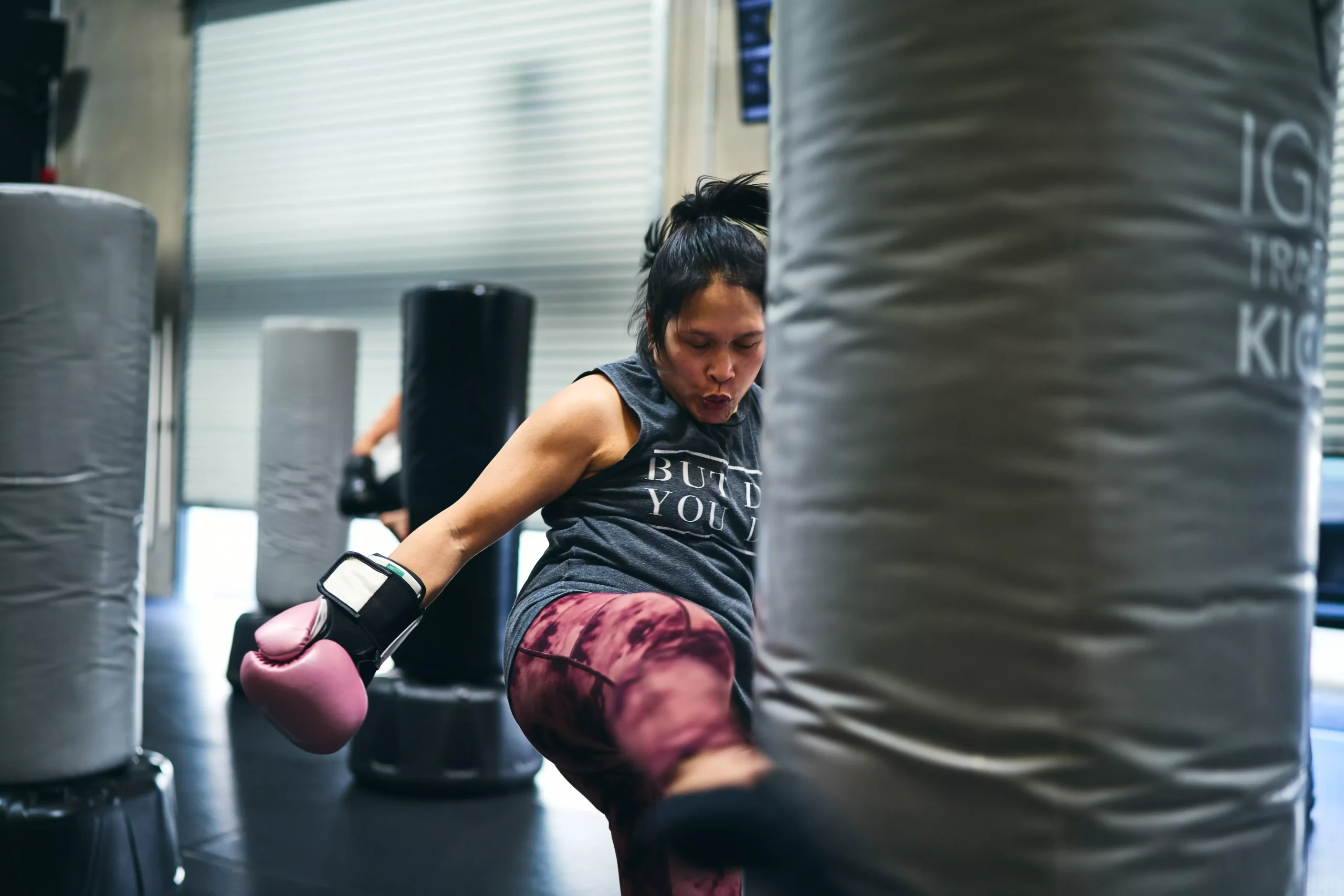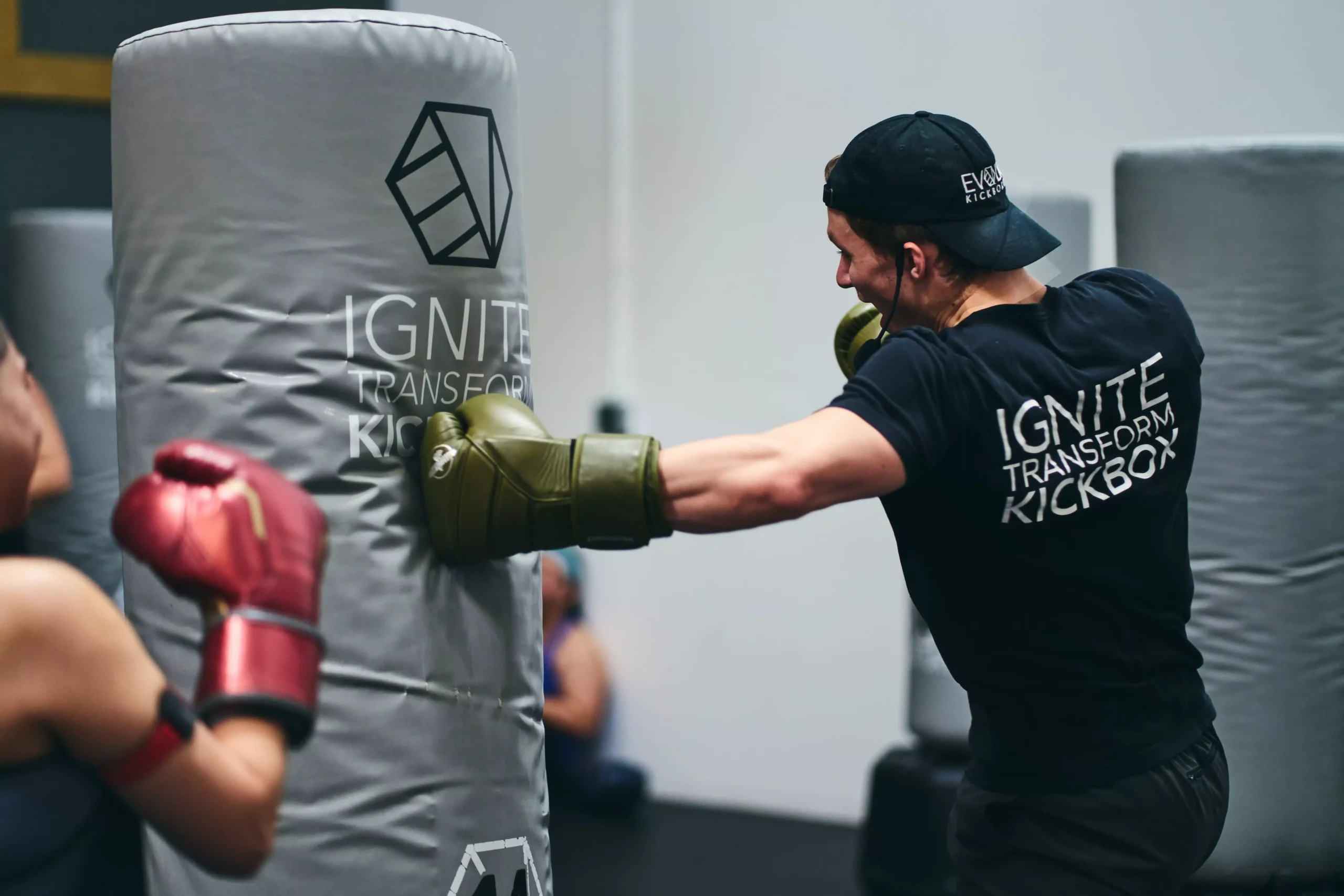
Kickboxing- Benefits to Your Health and Costs
Kickboxing is more than just a way to throw punches and kicks; it’s a full-body workout that packs a punch when it comes to health benefits. Whether you’re looking to shed some pounds, relieve stress, or simply try something new, kickboxing has a lot to offer. In this article, we’ll explore the health perks of kickboxing and break down the costs involved so you can decide if it’s the right fit for you.
Understanding Kickboxing and Its Origins
Historical Background of Kickboxing
So, where did kickboxing even come from? Well, it’s not like it popped up overnight. The roots go way back, with influences from various martial arts. Think Muay Thai, karate, and even some boxing thrown in for good measure. It’s a real melting pot of fighting styles. Kickboxing started gaining traction in the mid-20th century, especially in Japan and Thailand, as a way to blend different combat techniques. The term “kickboxing” itself was coined in the 1960s. It wasn’t just about fighting; it was about creating a new, dynamic sport. The history of kickboxing is pretty interesting, if you ask me.
Evolution from Martial Arts to Fitness
Okay, so it started as a martial art, but how did it become a fitness craze? Good question! In the beginning, kickboxing was all about combat and competition. But over time, people realized it was an amazing workout. All those kicks and punches? Serious cardio. Plus, you’re using your whole body, so it’s great for strength training, too. Then came the aerobics craze of the ’90s, and boom! Cardio kickboxing was born. Suddenly, everyone was doing high kicks in their living rooms. Now, it’s a staple in gyms everywhere, a fun way to get in shape without even realizing you’re working out.
Cultural Impact of Kickboxing
Kickboxing isn’t just a sport or a workout; it’s a cultural phenomenon. Think about it: movies, TV shows, even video games have featured kickboxing. It’s become a symbol of strength, discipline, and empowerment. The rise of kickboxing has also influenced fashion and music, with its aesthetics and energy finding their way into popular culture. Plus, it’s a global sport, with different styles and variations popping up all over the world. It’s a testament to the universal appeal of this dynamic and exciting activity.
Kickboxing has evolved from its origins in martial arts to become a popular fitness activity and a cultural symbol. Its blend of combat techniques and physical conditioning has made it a global phenomenon, influencing various aspects of popular culture.
Physical Health Benefits of Kickboxing
Kickboxing is more than just throwing punches and kicks; it’s a powerhouse for your physical well-being. It’s a full-body workout that torches calories and builds strength. Let’s break down the specific ways kickboxing can boost your health.
Full-Body Workout Dynamics
Kickboxing engages nearly every muscle group in your body. It’s not just about arms and legs; your core is constantly working to stabilize you during punches and kicks. This leads to improved overall strength and muscle tone. You’ll find yourself using muscles you didn’t even know you had! The dynamic movements also enhance flexibility and coordination. It’s a great way to get a full-body workout.
Cardiovascular Improvements
Kickboxing is a fantastic cardio workout. The constant movement keeps your heart rate elevated, improving cardiovascular endurance. Over time, this can lead to a stronger heart and better overall cardiovascular health. Think of it as interval training with a punch (and a kick!).
Weight Loss and Toning Effects
Looking to shed some pounds? Kickboxing can be a highly effective tool for weight loss. The high-intensity nature of the workout burns a significant number of calories. Plus, as you build muscle, your body becomes more efficient at burning calories even when you’re not working out. It’s a win-win! Kickboxing helps with weight loss and body toning.
Kickboxing offers a unique blend of cardio and strength training, making it an efficient way to achieve your fitness goals. It’s a fun and engaging alternative to traditional workouts, helping you stay motivated and committed to your health.
Mental and Emotional Advantages
Kickboxing isn’t just about throwing punches and kicks; it’s a serious mood booster. I’ve noticed a huge difference in my stress levels since I started. It’s like hitting a reset button for my brain.
Stress Relief and Mood Enhancement
Honestly, sometimes I walk into class feeling like I’m carrying the weight of the world on my shoulders. But after an hour of kickboxing benefits, I feel lighter, happier, and way less stressed. It’s a fantastic way to blow off steam.
- Releases endorphins, those feel-good chemicals in your brain.
- Provides a healthy outlet for frustration and anger.
- Helps clear your mind and improve focus.
Kickboxing is like a form of active meditation for me. When I’m focused on the combinations and movements, I can’t dwell on work problems or other anxieties. It’s a total mental break.
Boosting Self-Confidence
There’s something incredibly empowering about learning to defend yourself. It’s not just about the physical skills; it’s about knowing you can handle yourself if you need to. My self-confidence has definitely gotten a boost since I started kickboxing. I stand a little taller, and I’m not as easily intimidated.
- Mastering new techniques builds a sense of accomplishment.
- Improved physical fitness leads to a better body image.
- Learning self-defense skills fosters a feeling of empowerment.
Coping with Anxiety and Depression
I’m not going to say kickboxing is a cure-all for mental health issues, but it’s been a really helpful tool for managing my anxiety. The physical exertion helps burn off excess energy and nervous tension. Plus, the focus required during training keeps my mind from spiraling into negative thought patterns. It’s like a one-two punch against anxiety and depression.
- Provides a structured activity to break cycles of rumination.
- Encourages social interaction and reduces feelings of isolation.
- Promotes a sense of control and mastery over your body and mind.
Kickboxing Techniques and Training

Fundamental Striking Techniques
Okay, so let’s talk about the basics. Kickboxing isn’t just throwing punches and kicks; it’s about technique. You’ve got your jabs, crosses, hooks, and uppercuts for punches. Then you move into kicks – roundhouse, front, side, and push kicks. Each strike has a purpose, and learning how to throw them correctly is key to power and safety. It’s not just about being strong; it’s about being smart with your movements. Here’s a quick rundown:
- Jabs: Quick, straight punches for distance and setting up other attacks.
- Crosses: Powerful rear-hand punches for maximum impact.
- Hooks: Circular punches, great for close-range fighting.
- Roundhouse Kicks: Versatile kicks targeting the body or head.
Training Regimens for Beginners
When you’re starting out, don’t jump straight into sparring. Focus on the basics. Shadowboxing is your best friend – practice those punches and kicks in the air to get the form down. Then, move onto bag work. Hitting a heavy bag helps you develop power and endurance. Don’t forget about footwork drills; being light on your feet is crucial. A typical beginner’s routine might look like this:
- Warm-up (10 minutes of light cardio and stretching)
- Shadowboxing (3 rounds of 3 minutes each)
- Bag work (3 rounds of 3 minutes each)
- Footwork drills (10 minutes)
- Cool-down and stretching (10 minutes)
Safety and Injury Prevention
Safety first, always. Kickboxing is a full-contact sport, and injuries can happen if you’re not careful. Always wear the right gear – gloves, shin guards, mouth guard. Listen to your body; if something hurts, stop. Don’t push yourself too hard, especially when you’re new. Proper warm-up and cool-down routines are also important. And most importantly, learn from a qualified instructor who can teach you the right techniques and help you avoid bad habits. Self defence skills are important, but so is staying healthy.
Kickboxing is more than just a workout; it’s a skill. Take the time to learn it right, and you’ll not only get in great shape but also gain confidence and discipline.
Cost Analysis of Kickboxing Classes
Average Class Fees
So, you’re thinking about joining a kickboxing class? Awesome! One of the first things on your mind is probably, “How much is this gonna cost me?” Well, it really depends. Location matters a lot. Big cities usually mean higher prices. Also, the type of gym or studio plays a role. A fancy, boutique fitness place will likely charge more than a community center. Generally, you can expect to pay anywhere from $50 to $200 per month for unlimited classes. Some places offer drop-in rates, maybe $15 to $30 per class, which is great if you can’t commit to a regular schedule. Don’t forget to ask about introductory deals or trial periods – those can save you some cash when you’re just starting out. It’s a good idea to shop around and see what fits your budget and your needs.
Equipment and Gear Expenses
Okay, so you’ve figured out the class fees. But hold on, there’s more! You’ll probably need some gear. At a minimum, you’ll want hand wraps to protect your hands and wrists. Those are pretty cheap, usually around $10 to $20. Then there are the gloves. Good quality kickboxing gloves can range from $30 to $100 or more, depending on the brand and material. Some gyms might require you to buy their specific brand, so check that out first. As you get more into it, you might want to invest in shin guards (another $30 to $70) and maybe even a mouthguard ($5 to $20). Some people also like to get their own jump rope for warm-ups. It can add up, but you don’t have to buy everything at once. Start with the essentials and build your collection over time.
Membership Options and Discounts
Gyms and studios often have different membership tiers. A basic membership might just include access to classes, while a premium one could throw in things like personal training sessions, access to other types of classes (like yoga or strength training), or discounts on merchandise. See what martial arts insurance options are available. Look for discounts! Many places offer student, military, or senior discounts. Some might have referral programs where you get a discount for bringing in a friend. And don’t be afraid to negotiate! Especially if you’re signing up for a longer-term membership, you might be able to haggle a bit on the price. It never hurts to ask.
Kickboxing costs can be a barrier for some, but it’s important to consider the value you’re getting. Think about it as an investment in your health and well-being. Plus, many gyms offer payment plans or financial aid options to make it more accessible. Don’t let the initial cost scare you away – explore your options and see if you can find a way to make it work for you.
Community and Social Aspects of Kickboxing
Building a Supportive Network
Kickboxing isn’t just about throwing punches and kicks; it’s also about building connections. You’ll find yourself surrounded by people who share a common goal: to get fit and feel good. This shared experience creates a bond, and before you know it, you’re part of a supportive network. I remember when I first started, I was super intimidated, but everyone was so welcoming. We’d share tips and tricks, celebrate each other’s progress, and even grab coffee after class sometimes. It’s this sense of community that keeps me coming back.
Inclusivity in Kickboxing Classes
One of the best things about kickboxing is how inclusive it is. It doesn’t matter your age, gender, or fitness level; there’s a place for everyone. Instructors are usually great at modifying exercises to suit different needs and abilities. This creates a welcoming environment where everyone feels comfortable and supported. I’ve seen people of all shapes and sizes absolutely crush it in class, and it’s incredibly inspiring.
Group Dynamics and Motivation
Working out in a group can be a game-changer when it comes to motivation. The energy of the class is contagious, and it pushes you to work harder than you would on your own. Plus, there’s a healthy sense of competition that can help you push your limits. Seeing others achieve their goals motivates you to achieve yours. It’s like, if they can do it, so can I! And when you’re struggling, having a group of people cheering you on can make all the difference.
Kickboxing is more than just a workout; it’s a community. The shared sweat, the high-fives, and the mutual support create a bond that extends beyond the gym. It’s a place where you can be yourself, challenge yourself, and grow, both physically and mentally.
Comparing Kickboxing to Other Fitness Regimens
Kickboxing vs. Traditional Cardio
Kickboxing and traditional cardio both get your heart pumping, but they do it in different ways. Traditional cardio, like running or cycling, is often steady-state, meaning you maintain a consistent pace. Kickboxing, on the other hand, involves bursts of high-intensity activity followed by brief recovery periods. This interval training approach can be more effective for burning calories in a shorter amount of time. Plus, kickboxing engages more muscle groups than many traditional cardio exercises, offering a more complete workout. For example, kickboxing classes can burn up to 800 calories per session.
Strength Training Benefits
While not solely a strength-training workout, kickboxing offers significant strength benefits. The punches, kicks, and knee strikes all require power and control, which helps build muscle strength and endurance. Unlike traditional weightlifting, kickboxing uses your body weight as resistance, making it a functional fitness activity. This means you’re building strength that translates to everyday movements. It’s a great way to improve heart health and overall fitness.
Unique Aspects of Kickboxing Workouts
Kickboxing stands out from other fitness regimens due to its unique combination of cardio, strength, and martial arts techniques. It’s not just about physical fitness; it also improves coordination, balance, and mental focus. The dynamic movements and striking combinations keep your mind engaged, making it a more stimulating workout than many repetitive exercises. Plus, the self-defense aspect can boost your confidence and provide a sense of empowerment. Kickboxing has evolved from a pure combat art to a dynamic fitness phenomenon.
Kickboxing offers a full-body workout that combines cardio and strength training with mental discipline. It’s a fun and challenging way to get in shape, relieve stress, and learn valuable self-defense skills. The variety of techniques and the intensity of the workouts make it a great option for people who get bored easily with traditional exercise routines.
Here’s a quick comparison:
| Feature | Kickboxing | Traditional Cardio | Strength Training |
| Cardio | High-intensity interval training | Steady-state or interval training | Minimal |
| Strength | Bodyweight resistance, functional strength | Minimal | Primary focus, weights or resistance bands |
| Muscle Engagement | Full-body, multiple muscle groups | Primarily lower body (running, cycling) | Targeted muscle groups |
| Mental Focus | High, requires coordination and technique | Moderate | Moderate |
| Calorie Burn | High | Moderate to High | Moderate |
Final Thoughts on Kickboxing
So, there you have it. Kickboxing isn’t just about throwing punches and kicks; it’s a full-body workout that can really change your life. You get to burn calories, build strength, and even boost your mood all at once. Plus, it’s a fun way to meet new people and challenge yourself. Whether you’re looking to lose weight, get fit, or just blow off some steam, kickboxing has something to offer. And when you look at the costs versus the benefits, it’s pretty clear that it’s worth it. So why not give it a shot? Grab some gloves, find a class, and see what all the hype is about!
Frequently Asked Questions
What is kickboxing?
Kickboxing is a fun workout that mixes punches and kicks. It helps improve fitness and is great for self-defense.
What are the health benefits of kickboxing?
Kickboxing helps you get stronger, lose weight, and boost your heart health. It also reduces stress and improves mood.
Is kickboxing safe for beginners?
Yes! Kickboxing is safe for beginners. Classes usually start with basic moves and focus on proper techniques.
How much does it cost to take kickboxing classes?
The cost of kickboxing classes can vary, but many places charge between $10 to $30 per class. Some gyms offer discounts for memberships.
What equipment do I need for kickboxing?
You will need boxing gloves, hand wraps, and comfortable workout clothes. Some classes may provide equipment.
Can kickboxing help with stress?
Absolutely! Kickboxing is a great way to let out stress and feel better. It releases endorphins that improve your mood.
